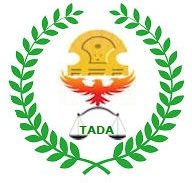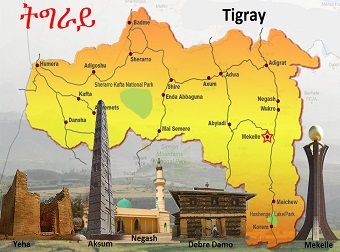King Saileselassie Wosenseged of Showa had seven sons and daughter from his wife Buzuneshe, most prominent of which were Haile Melkot and Tenaghnework for producing progenies who claimed the seat of the royal throne.
He had also a concubine named Wurgi, a Hadiya or Silte origin. She had him a son known as Darge. He inturn had nine sons and daughters, most notable Wezero Tisseme, grandmother of Ras Aserate Kassa Hailu and likewise, Dehazmach Assfaw Darge, whose daughter became the second wife, Atsede Asfaw, of Ras Seyeum Mengesha of Tigray. She bore no child from him.
Though he had a daughter from Tewabech Mikel Ali, a king of Wello, Prince Welte Isreal who at the age of 26 (1907-1989) remarried Price Assefa Woden Haileselassie (1916-1997) when he was 15 years old in 1931.She was only married for a year with a dowry entitlement rights of a large swath of land (Raia/ራያ) bestowed to his wello governance, take it off from Tigray. She was married to her second cousin. But she was divorced soon after after she gave birth to a daughter, Ejegayhue Assfawosen, probably fearing she might produce a male child next, who would then have an exclusive claim to the throne after the death of his grandfather, Haileselassie.
Her mother Tewabech Mikel Ali was half sister of Wezero Sihin Mikel Ali from his another wife, Wezero Fantaye Gebru. He had also another wife named Shawa Regad Menelik who bore him Lij Iyasu.
The twist. Lij Iyasu married, among many others, Wezero Romans Work Mengesha, a sister of Ras Seyeum Mengesha mothered by Wezero Kefaya Wale Butul, a nice of Itege Tytu Butul.
Talk of Menelik, he was officially married to three women, Alitash Tewdrows, Befena Welde and Tytu Butul. He had no child born from the three despite, none whatsoever.
Even though Bafona was fecund, as he had already given birth to three from other men before the age of 31, born and died (1834- 1887), when she remarried Menelik (1865-1883).. It was 17 years of marriage but with no offspring to show off.
On her fourth marriage to Menelik (1883-1913), Taytu was also 31 years old born in (1851- 11 February 1918). She was at a child bearing age, But we may suspect Tytu too may have been barren, as she tried her luck with three men before Menelik, but to no avail.
The marriage of Zewditu, her daughter-in/law, to Gugesa Wale Butul, her nephew, May haven been to an attempt to solidify her ambition to stay in power after Menelik’s death as she knew he suffered from incurable Tabes dorsals.
There was no doubt Alitashe Tewdrows was receptive teenager, married to Menelik (1855-1865)and could be have been fertile had she met with a right man. But it wasn’t to be.
This implies Menelik was barren/sterilised. The thought that he had children from maids outside wedlock could be a make believe stitches to serve the Showa’s nobilities. Even his mother, his father married for less than a year, Ejigayohu Adeyamo was believed to be Gurage (if not an Oromo), the Amharas tried to cover up.
That was why it was less of a burden for the showan nobility to get rid of Lij Isaysue in 1935 and subsequently Zewditu from the throne, both killed at the hands of Haileselassie and his entourages, one in a prison cell in captivity and Zewditu by drowning her in a bath two day after. following the defeat and death of her 3rd husband, Gugsa Wale Butul, who challenged Haileselassie and the Showan nobility that he ought be the emperor of Ethiopia because he was married to the queen.
Finally this takes us to Haileselassie Mekonnen Welde Mikal Gudessa, an Oromo linage by his great grandfather. Also his mother, Jemila Ali Abagifar (his grandmother’s name Werkiheto) was a Gurage and Moslem. Not that being Moslem is wrong. If some other followers of other faith or beliefs disrespect other person’s belief, that is wrong and needs to be challenged. But if a person of the faith disrespects her/his own or faith, then it is that person that needs to be challenged as an unacceptable. Thus it is wrong is denying one’s identity and claim what you aren’t as the Emperor did – a self inflict disregard!
His half brother Dejazmach Yilema’s daughter was married to Ras Gugsa Araya of Tigray but produced no offspring. As Araya Selassie Yohannes himself had his first wife, Zewditu Menelik at the age of 14 whilst she was 10 years old before he died of measles, age 16.
His grand son from another Tigrayan wife, Haileselassie Gugsa Araya Selassie married Zenbe Worke Haileselassie Mekonnen. She too died at the age of 16. Her body was send to Addis Ababa without accompanied by her husband for fear that he would be arrested opposing the Emperor’s reign. He did not run away for his fears. Haileselassie was very furious his daughter was abandoned. As it proved to be he was eventually handed over by his rival to Tigray claim, Ras Seyum Mengesha, as accomplice and mercenary working for Italy. He spent nearly 40 years (1947-1985) years in Gore prison and in house arrest in Ambo, after Mengestu Hailemariam came to power till his death.
Mekonnen Welde Mikal Gudessa had also another wife, Mentewab Wale Butul, a nice of Itege Tytu for a short brief, before he remarried Jemila/Yeshe Mebet Ali, the mother of Emperor Haileselassie.
So much for his Amhara lineage and claime of a Solomonic line/lion of Juda!
He remarried Itege Menen Assfaw, after Wezero Altayech, she gave birth to Romane Work who died at the age of 40 in Italy.
Menen had three other noble husbands before Haileselassie got married to her. Her first was Degazmach Ali and gave both to Belaynesh Ali and Asfaw Ali. She then got divorced and remarried Dejazmach Amede Ali and gave birth to Desta Amede and Gebregziabher Amede.
By the way the wife of Ras Asrste Kassa Haile, governor of Eritrea, Le’ult Zuriashwork Gebregziabher, was granddaughter of Itege Menen. After the death Dejazmach Amede she married Ras Seged, then followed by emperor Haileselassie Mekonnen. the known Ras Teferi Mekonnen.
Talk of Aserat Kassa Hailu, his wife was Wezero Tisseme Darge was also 75% Oromo and Selte mixed.
Wezero Tissema Darge had ten other brothers and sisters, from a renown father as an Amhara royal, but her and the other brothers and sisters mother’s name and identity is not known and/or recorded.
Amhara elite chroniclers had the audacity to list the offsprings but failed to do so of their mother, as they have something embarrassing to hide.
List the names of Ras Darge’s sons and daughters:
1. Dejazmach Desta Darge,
2. Woizero Tisseme Darge,
3. Fitawrari Shewareged
4. Darge, Dejazmach
5. Tessema Darge,
6. Woizero Tsehaywork
7. Darge, Woizero Askale
8. Darge, Dejazmach
9. Asfaw Darge,
10. Lij Gugsa Darge
11. Lij Belw Darge.
The succession to Selale/ሰላሌ eventually passed on to his grandson Ras Kassa Haile Darge, son of Woizero Tisseme Darge
* Ras Hailu Darge is a deliberate misnomer. Haile’s farther was Wolde Kiros, of Lasta and Agew, half brother of King Tekle Giyorgis/Wagshum Gobeze of Gojjam
The rest is history but this much was a mastery.
Just like the mystery of the Mummies so much talked and written about – a display of mammoth pontification, mystery and edification of a petty monticule pyramids taking months if not years to build for just a small job carried out, burying a dried cured/rizzar of human skin with all internal organs and enteral removed and dumped.
One would have thought the entire venerated body intact would be preserved for the deceased pharaohs to communicate with divinities as necromancers to be venerated.
It came as a surprise when one learns that a dead body of a pharaoh was subjected to further brutalisation and disfigurement in the hands of operators, as if death was not enough to depart this world.
The body is dissected vertically by the side ribs, and the entire internal organs and viscera are removed, eye balls gouged out. including the brain tissues are sucked out by piercing a hole through the nostril.
It is only the bare skin coffer, attached to the bones that is left to dry, dossed with salt layers and palm oiled for three month before it is buried. A rizzar not surprising that it survive thousands of years. But someone showed me not a skin but a beef flesh of turned rizzar to be used as food in 1896 Battle of Adua.
So what is the brouhaha about the Pharaohs in the pyramid as if was rocket science discovery the world is led to believe!
Haven’t we seen mummified cadaverous of cats and dogs along the footpaths of Sudanese towns, kept intact for years in end without human endeavours to preserve. Despite, if anything people wish to get rid of the remains!
Belay Ambelay
References
1. Prouty, Chris (1981). Historical dictionary of Ethiopia. Metuchen, New Jersey: Scarecrow Press. pp. 44–45. ISBN 081081448X.
2. Jump up to:
a b c d e f g TAFLA, BAIRU (1975). “Ras Dargé Sahlä-Sellasé, c 1827-1900”. Journal of Ethiopian Studies. 13 (2): 17–37. JSTOR 44324711. Retrieved 25 June 2022.
3. Jump up to:
a b c d e Uhlig, Siegbert; Bausi, Alessandro; Yimam, Baye, eds. (2003). Encyclopaedia Aethiopica: D-Ha. Wiesbaden: Harrassowitz. pp. 102–103. ISBN 9783447052382.
4. Jump up to:
a b c Montgomery-Massingberd, Hugh (1980). “The Imperial House of Ethiopia”. Burke’s royal families of the world : 2. vol. London: Burke’s Peerage. pp. 51–53. ISBN 9780850110296. OCLC 1015115240.
5. Marcus, Harold G (1995). “The First Twenty-two Years: 1844-1866”. The life and times of Menelik II : Ethiopia, 1844-1913. Lawrenceville: Red Sea Press. p. 19. ISBN 9781569020104. OCLC 31754650.
6. Marcus, Harold G (1994). A History of Ethiopia. University of California Press. p. 67. ISBN 9780520081215.
7. Marcus, Harold G (1995). “The Preliminary Struggle for Power : 1866-1878”. The life and times of Menelik II : Ethiopia, 1844-1913. Lawrenceville: Red Sea Press. p. 32. ISBN 9781569020104. OCLC 31754650.
8. Marcus, Menelik II, p. 89
9. P. T. W. Baxter, “Ethiopia’s Unacknowledged Problem: The Oromo”, African Affairs, Vol. 77 (July, 1978), p. 291
10. Marcus, Menelik II, p. 215
11. Bilaten Geta Mahiteme Silase Welde Meskel, page 21 from the book of the great family tree of King Sahile Silase

